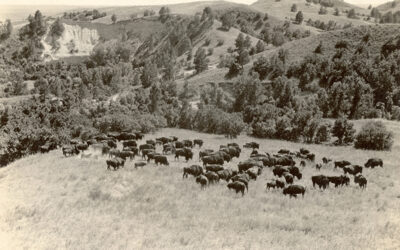Clark Irvine arrived in Nebraska Territory in 1855 anxious to take advantage of whatever opportunities existed in a new land. His recollections of early Omaha, established just the year before, were read at the annual meeting of the Nebraska State Historical Society on January 11, 1899.
“I arrived at Omaha on the second trip there by the steamer so named in the spring of 1855, forty-three years ago, . . . I remember seeing Captain Moore and Wm. Clancey standing conspicuously on the town site not far from the Apex saloon, kept by Kimball, and pointing out city lots to new arrivals. One of our passengers, a German, had bought a lot in Omaha from some speculator on board for about $400. It was not far from the Douglas House towards the river. It was part of a ravine, ‘a hole in the ground,’ and he made an awful fuss. We all sided with him, saying it was a perfect swindle. ‘The price was awful for a mere hole in the ground,’ was the general opinion, so green were we newcomers on western lot speculations. My recollection is that the man or some other one, got $800 for the hole soon after.”
Omaha was only one of a number of new towns along the Missouri River. Irvine investigated conditions at Fort Calhoun, which “had but two or three cabins on the whole town site.” He then went on to DeSoto, a “cluster of cabins in a hollow by the river. We found nobody, and nothing there to invite us. . . . There was a place, called Cuming City after [Territorial] Secretary of State Cuming a few miles above on a fine site, but far from the river. Jim Stewart, a prominent citizen there, I soon after made acquaintance with. Both the places have departed the earth, and their very sites have been forgotten . . .
“Returning, we stopped again at Fort Calhoun, and when I left the next morning I promised to come back and live there, as I was perfectly sick of the wretched accommodations, the crowds, and dissipations of Omaha. I had no idea that Omaha would ever become of much account. In fact there were fifty town-sites equally ambitious. So I returned to Fort Calhoun and took up my residence with the [George] Stevens family. Amid their primitive times and ways, I never enjoyed my life more. We were all contented, hopeful, and equal. About a dozen more homes were put up there that season and a good saw mill by one B. F. Littell with Alonzo Perkins and old man Allen. Lumber was in such demand that many teams from even near Omaha would be seen waiting for their turn to be laden.”
Irvine eventually left Nebraska Territory and settled at Oregon, Holt County, Missouri, where he still lived in 1899. 
Barely a decade after Irvine arrived in 1855, Omaha was growing rapidly.
From Alfred T. Andreas, History of the State of Nebraska (1882).



